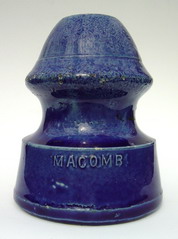
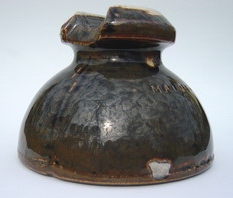
Rare Porcelain Display (page 6)
Rare Porcelain Display: Page 1 Page 2 Page 3 Page 4 Page 5 Page 7
Macomb, Square D, and Peru Electric Mfg. Co.
While not as old as the other insulators in the display, there are a few very rare Macomb insulators. The Illinois Electric Porcelain Co. was started in 1910 in Macomb, IL. The first insulators they made were dry pressed styles. Insulators with the embossed marking, MACOMB, were made until some time after the factory started making wet process porcelain insulators in late 1915. The next two Macomb insulators are unique specimens that surfaced in recent years. U-244 is one of the most common Macomb styles. All Macomb insulators are mottled dark brown that can range from blonde areas to completely near black. That is with one exception. The U-244 specimen in the display is a beautiful blue color -- and a one-of-a-kind! Last year a new Macomb style was located. It is the dry pressed version of U-565. Macomb insulators seemed to have a wide distribution, so additional new styles made be waiting to be discovered.


U-244 with beautiful blue glaze. Right is U-565 with the embossed MACOMB marking.
A rather unique style made by the Square D Co. in Peru, IN was U-182A/B. It may appear to be a transposition style, but it is actually a style that does not require a tie-wire, which is commonly called self-tying. For many years it was incorrectly identified as having been made by the 1885 Prenzel patent. In fact, it was made by the 1919 Roberts patent. It was made of dry pressed porcelain. The specimen in the display is unique and was probably a sample used to sell it to telephone companies. It was originally found in the 1970ís by Gerald Osler and his son Jeff in the drawer of an antique dresser at an antique store with the varnished side pin. Gerald Brown purchased the insulator from the Oslers. Not long after than Jeff was killed in an automobile accident. Gerald Brown knew the father and son were very close, so he gave the insulator back to the father as a remembrance of their joy together when they found it.

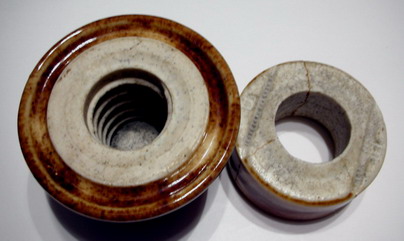
U-182A/B was made of dry pressed porcelain at the Square D plant. Note the bottom half has two grooves for two different sizes of wire: 14 gauge (left) and 12 gauge (right). The top was screwed down to secure the wire against the bottom half of the insulator.
The next insulator is also a unique one-of-a-kind specimen. It is U-928B made to compete with the famous Boch U-928 and the larger U-928A. What makes this styles so unusual is not only the little ears on top to provide a secure footing to fire it upside-down, but the insulator is a fine example of dry pressed porcelain. The recesses between the long, thin petticoats are especially deep--much deeper than the Boch U-928. It is hard to believe that enough pressure could be exerted to make such a complicated dry pressed porcelain style, which has a porcelain quality comparable to wet process insulators in the time -- 1898 to 1899. This unique specimen was one of a group of 13 insulators of various under-glaze ink marked Fred Locke insulators. The markings on the Fred Locke insulators and the near perfect condition of each suggests that the group was originally in the Fred Locke factory many years ago on display as examples for buyers to inspect.
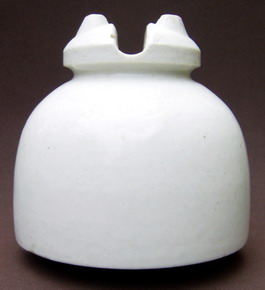
U-928B is similar to the Boch U-928 except it is made in one piece of very fine dry pressed porcelain. It is the ultimate in dry pressed porcelain technology. The recessed between the inner skirts are much deeper than the U-928. The pinhole is a bit too small so does not screw down on a pin very far. Note the air gaps in the porcelain on the sides of cable groove.
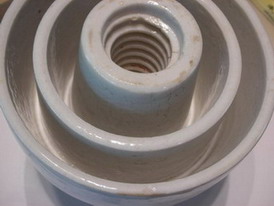
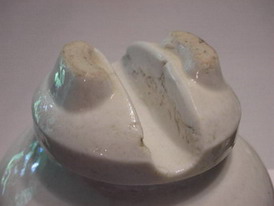
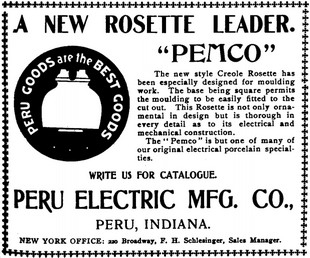
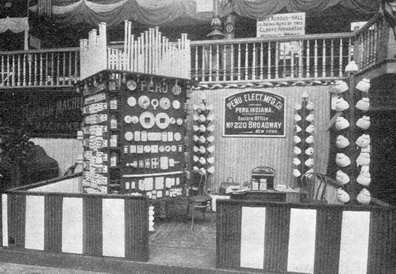
Left is an advertisement from the January 6, 1900, Electrical World and Engineer showing U-928B (courtesy of the Smithsonian Institute NMAH). The photo on the right is from the May 19, 1898, Electrical Engineer. Notice the pole on the right literally covered with U-928B's as well as the two poles in the back of the booth. Peru Electric Mfg. Co. made all sorts of tubes, knobs, and porcelain for various electrical applications.
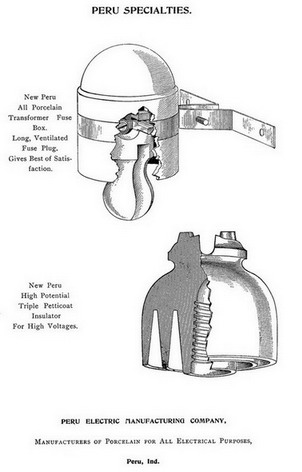
Peru advertisement in the 1899 Buyer's Reference showing U-928B.
New Lexington High Voltage Porcelain Co.
The New Lexington High Voltage Porcelain Co. was in operation from March 1903 until about 1912. Insulators with the incuse marking, NEW LEXINGTON, O. are very rare. All seven New Lexington insulators in the display have the marking. The earliest New Lexington insulators have a very light tan, almost blonde glaze, which was soon replaced with a dark brown glaze. New Lexington probably has the widest variety of darker glaze colors ranging from speckled rich brown, near black with tan mottling, and ugly German chocolate brown that often appears to have been underfired. Unfortunately there are few specimens that have the more desirable light tan glaze. The photos shown here are the seven insulators in the display.
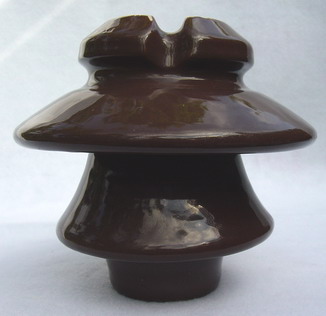
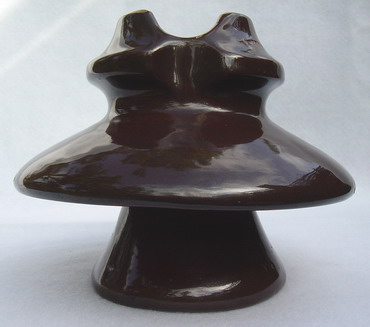
U-954 (left) and M-2140 (right) each have the incuse marking NEW LEXINGTON, O.
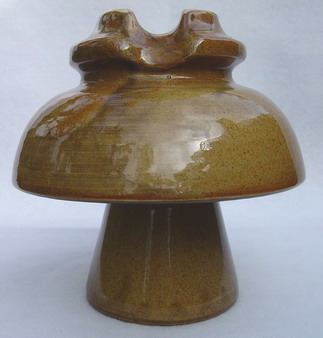
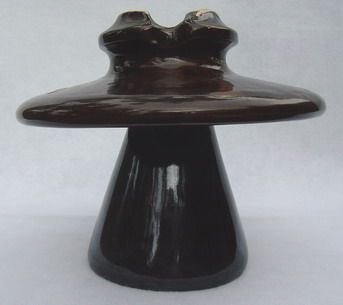
M-2260B (left) and M-2440 (right) have the incuse marking.
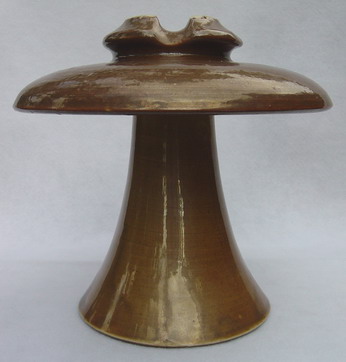
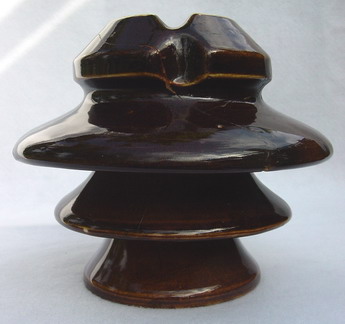
Both the M-2637 (left and M-3022 (right) have the incuse marking.
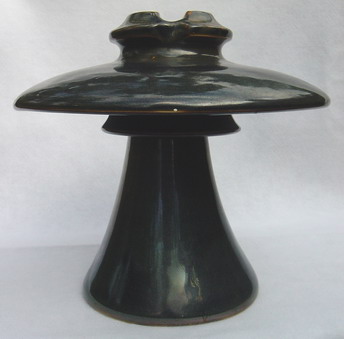
M-2841 with incuse marking NEW LEXINGTON, O. The glaze is nearly black, but is mottled with sprays of tan to make a very unusual glaze that is quite attractive.
Perhaps the most beautiful and unusual porcelain multipart insulator is the M-2636 made at New Lexington with a rich turquoise glaze. The lily-shell shape is enough to make this insulator sought after by collectors, but, in combination with the glaze color, it is unarguably one of the most desired porcelain insulators.
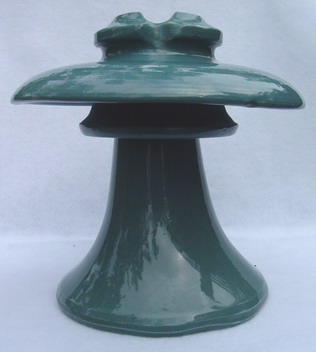
Unmarked New Lexington M-2636 with beautiful, rich turquoise glaze.
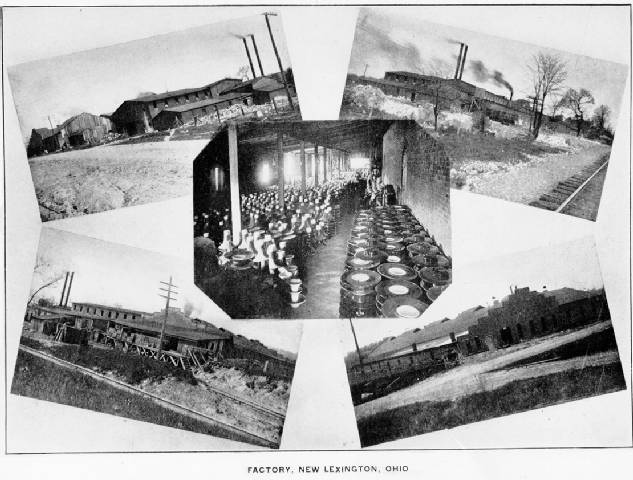
This grouping of photos was shown in the 1907 C. S. Knowles catalog.
Rare Porcelain Display: Page 1 Page 2 Page 3 Page 4 Page 5 Page 7